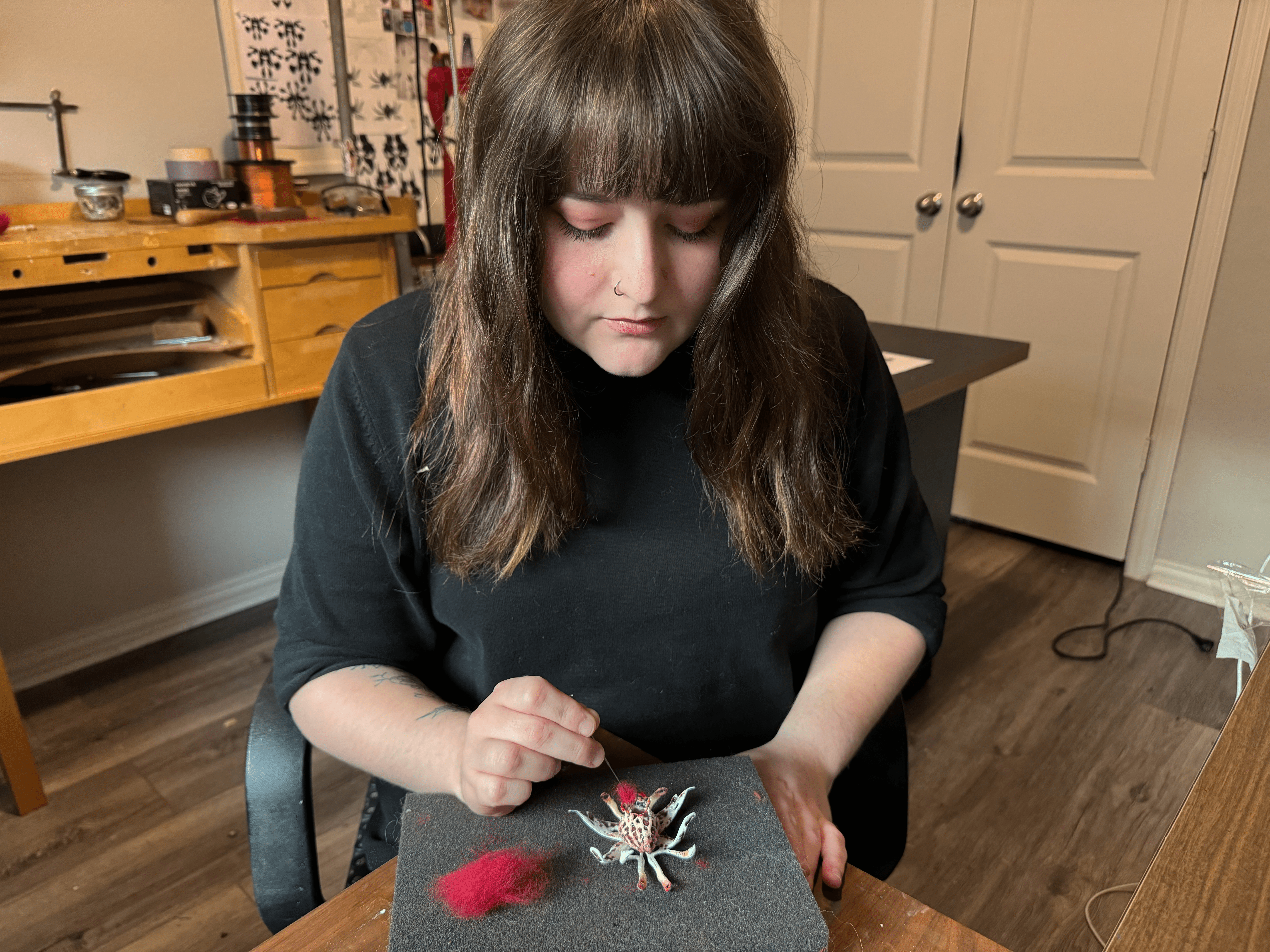We recently connected with Brittney Hampton and have shared our conversation below.
Brittney, thanks for joining us, excited to have you contributing your stories and insights. Learning the craft is often a unique journey from every creative – we’d love to hear about your journey and if knowing what you know now, you would have done anything differently to speed up the learning process.
How did you learn to do what you do?
In my undergrad, I took a course on combining textile techniques with metalsmithing. That course greatly influenced my practice, I learned to knit, crochet, and weave copper wire and fell in love with weaving forms. My work prior to taking the course focused on enamel, so naturally I was interested in combining woven wire with enamel. I enjoyed the way enamel pooled on select areas of the wire, creating a variety of line weights. I have always been interested in learning plique-à-jour, which is an enameling technique where enamel is applied to cells with no backing. To put it simply, plique-à-jour has a similar appearance to a stained glass window. Through experimentation, I decided to combine plique-à-jour with my woven forms, the negative space between the wires felt like an opportunity to add translucent enamel. Through a lot of trial and error, I have been able to develop my own version of plique-à-jour.
What skills do you think were most essential?
Learning any metalsmithing or enameling technique requires practice, time, and patience. No one is born knowing how to work with these materials, a maker has to hone their craft through learning from other makers, research, and experimentation.
Knowing what you know now, what could you have done to speed up your learning process?
Counterintuitively, being patient. Rushing work only to make mistakes you have to fix later wastes more time. I find it is better to slow down and do things right the first time, rushing the enameling process always leads to mistakes.
What obstacles stood in the way of learning more?
The obstacle that still currently stands in my way the most is the size of my own work. Larger pieces are more difficult to support in the kiln, causing more warping and sinking.
I am a metalsmith living in Denton. I received my master’s in Metalsmithing and Jewelry at the University of North Texas. I am interested in pursuing teaching and showcasing my work in galleries the world over.

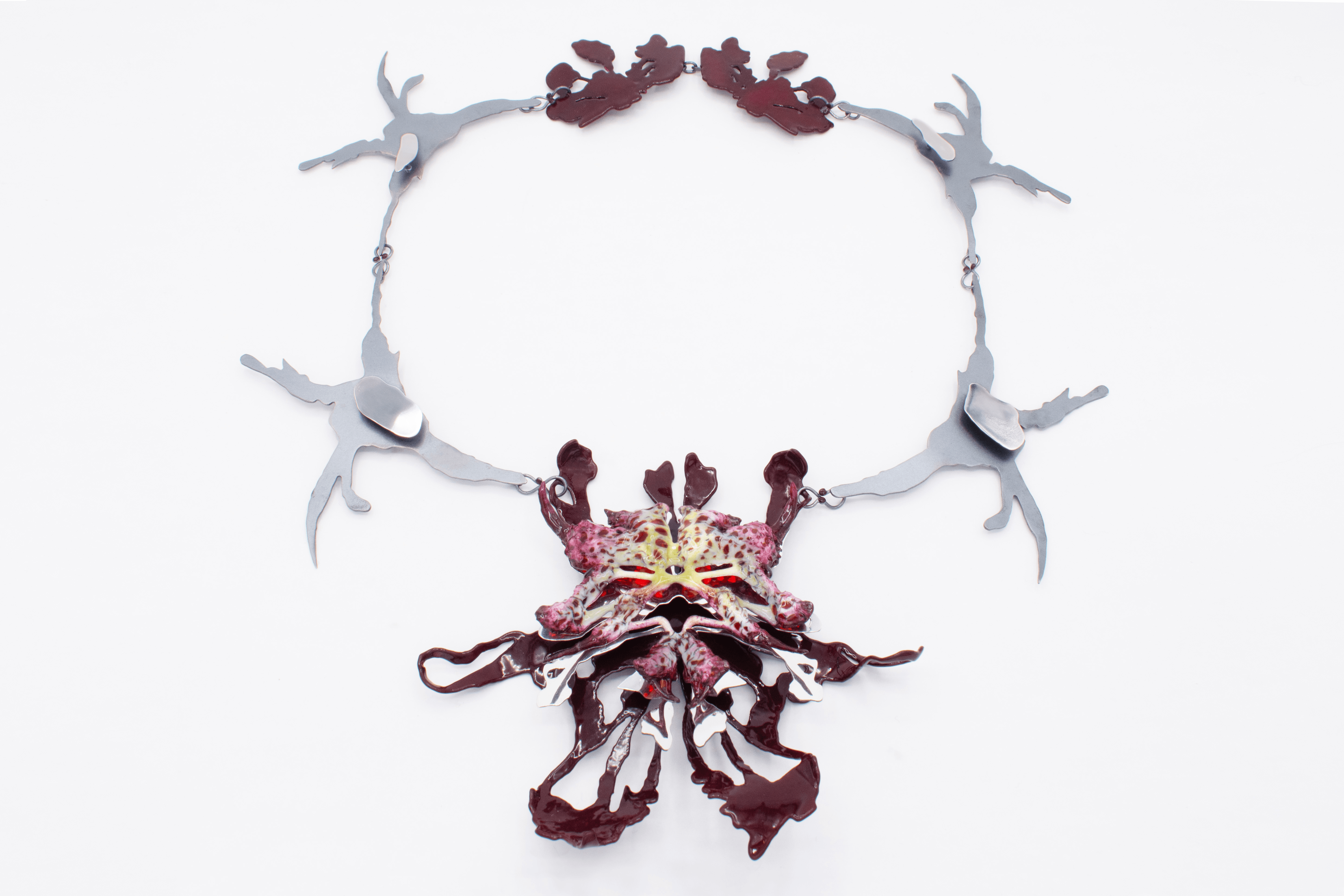
As always, we appreciate you sharing your insights and we’ve got a few more questions for you, but before we get to all of that can you take a minute to introduce yourself and give our readers some of your back background and context?
I am a metalsmith living in Denton. I received my master’s in Metalsmithing and Jewelry at the University of North Texas. I am interested in pursuing teaching and getting my work into galleries.
My current body of work is an exploration of light, color, and space through an expanded understanding of plique-à-jour and textile techniques. Textile techniques are combined with metal and enamel to create dynamic forms that reference the natural world without mimicking any organism specifically. The forms of my pieces are influenced by carnivorous plants which, unlike other plants, lure living prey through nectar and utilize intense coloration to mimic flowers. These methods are used in conjunction with features such as pitfalls, adhesives, and movement to snare prey. When asking myself “Why do I wear jewelry?” I discovered that I personally wear jewelry as a conversation starter, since wearing a statement piece entices more people to interact with me. My collection of work, like the colors and patterns of the carnivorous plant, aims to lure people closer. Colorful reflections and small details invite people to explore my work and in turn, interact with and explore me as a person.
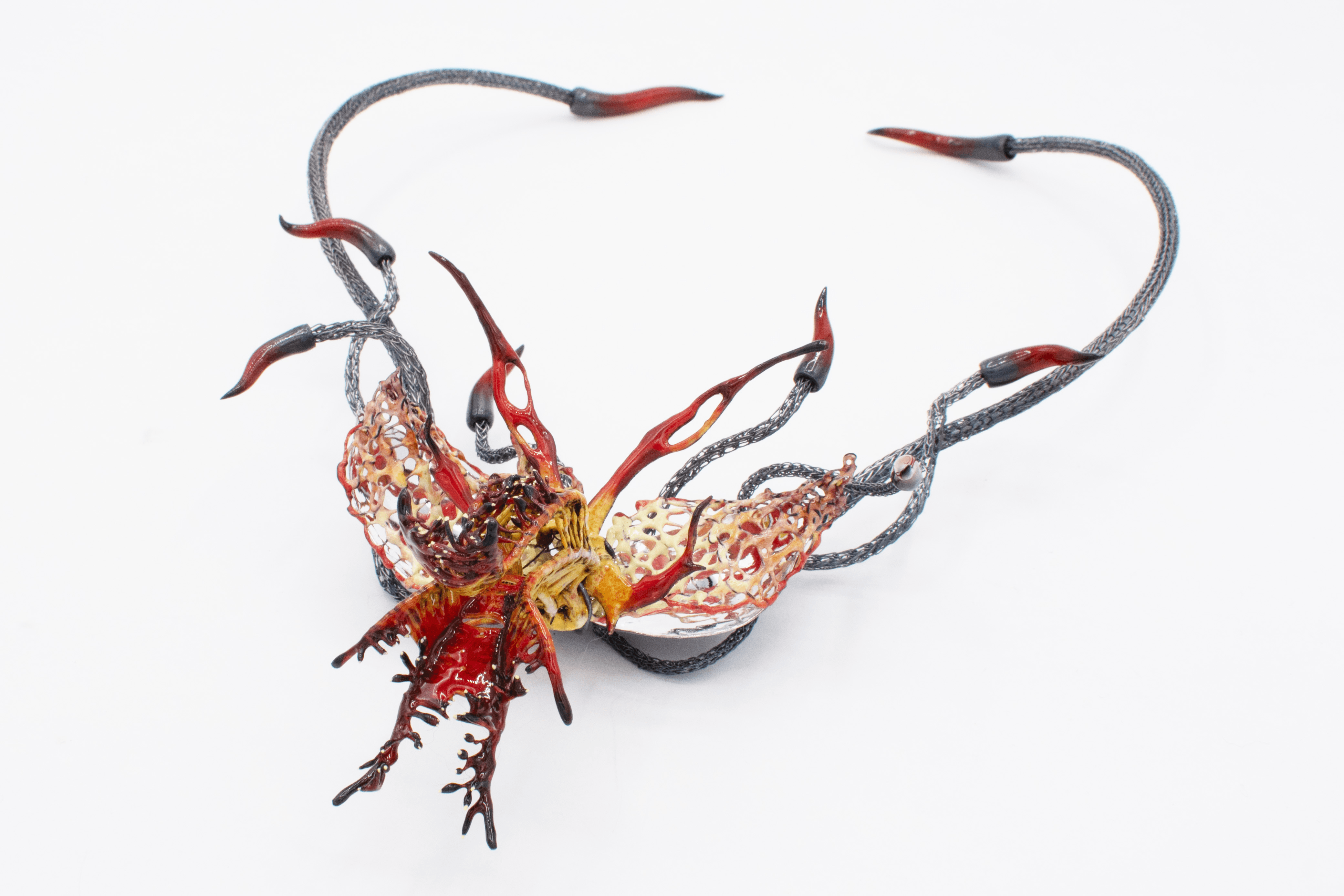
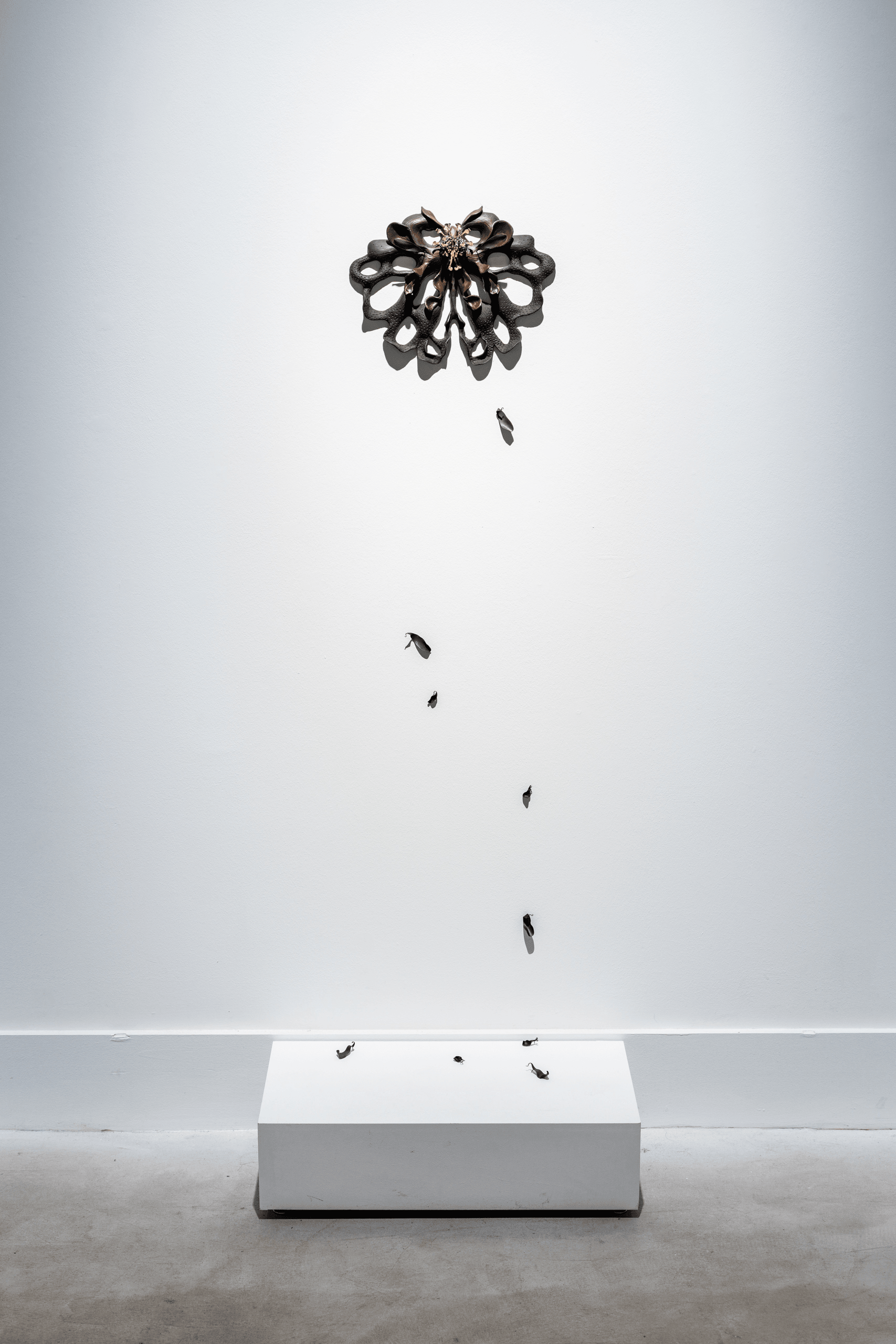
For you, what’s the most rewarding aspect of being a creative?
The most rewarding aspect for me is when someone buys a piece from me. Seeing people connect with my work and purchasing a piece for themself to wear is something special. The clothing and jewelry people wear is another creative way for someone to express themselves, so I find it exciting when someone chooses my work as part of their personal expression. Jewelry can also have a lot of sentimental value, so when working on commissions I always enjoy getting to create custom pieces for people that can represent a memory; or crafting a gift that can then become a sentimental piece shared between two people.
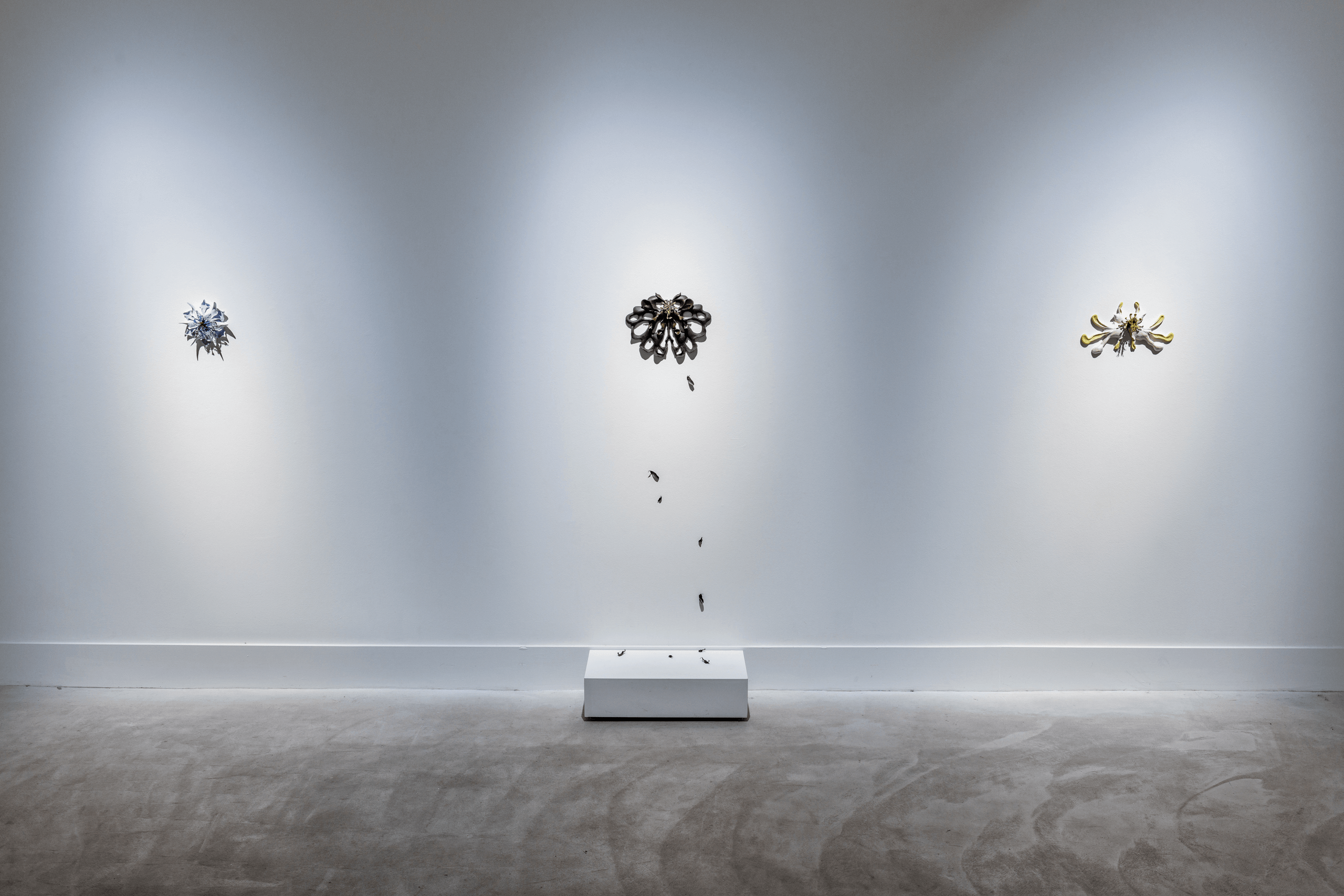

What can society do to ensure an environment that’s helpful to artists and creatives?
I always recommend buying handmade. So much of the jewelry in the modern marketplace is mass-produced. When you buy from a maker I find that they put more time, care, and passion into the process of creation which I feel is reflected in the final product. While handmade work tends to be more expensive, I think it is worth it for the craftsmanship and the knowledge that you are helping small business owners continue to express their creativity. Not to mention small businesses tend to create more unique and special pieces.
Contact Info:
- Website: https://www.britthjewelry.com/
- Instagram: https://www.instagram.com/britt_h_jewelry/
- Linkedin: https://linkedin.com/in/brittney-hampton-447499302

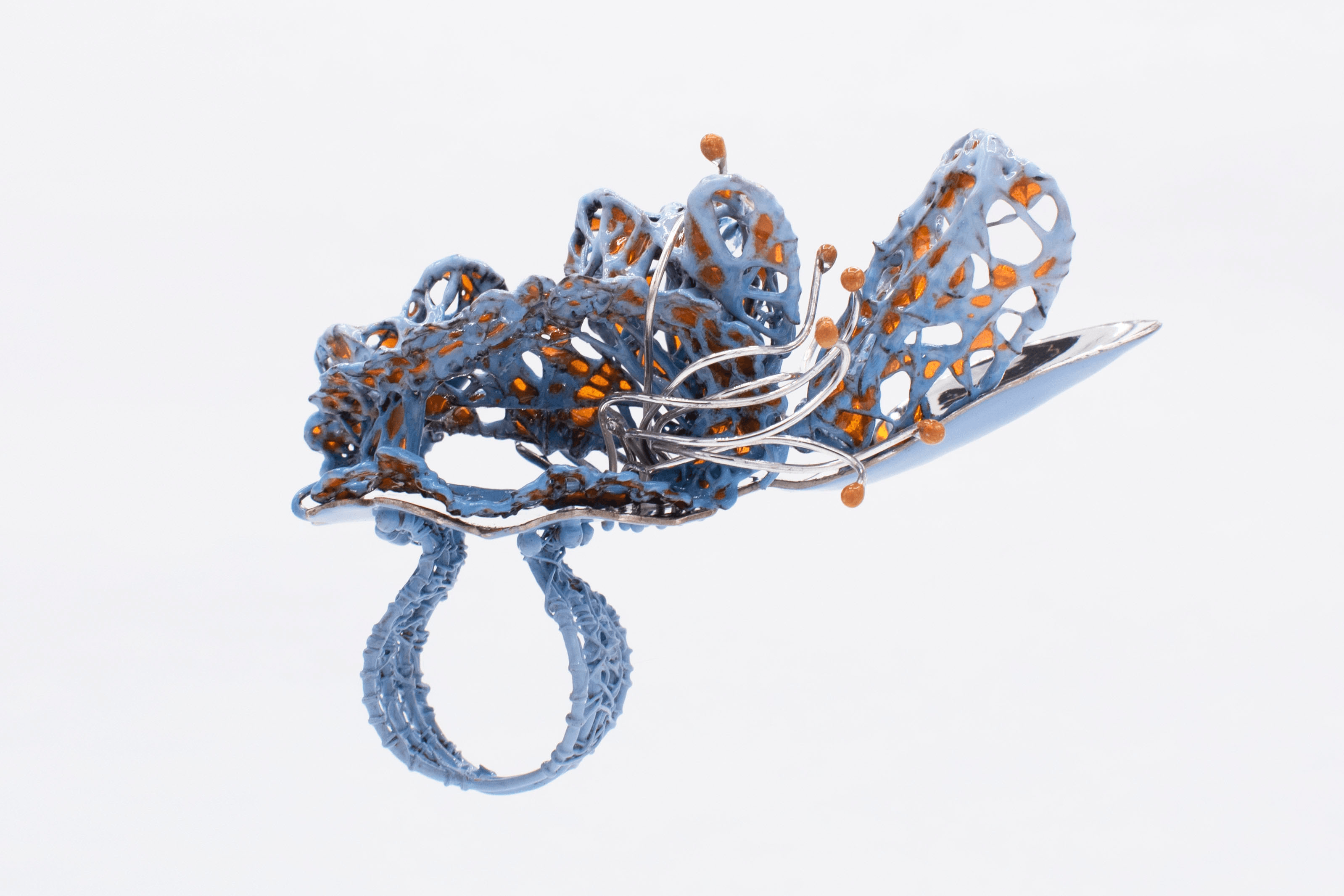
Image Credits
The wall pieces were photographed by Stephanie Lisa Gerhart.
HamptonMFA_Web-24.jpg
HamptonMFA_Web-19.jpg
HamptonMFA_Web-8.jpg
Hampton_Brittney_Botanic_OnTheWall.jpg


